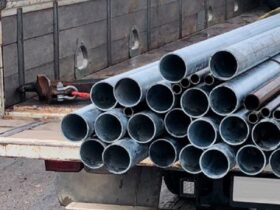Often, under the influence of time or external factors, the plastered surface loses its attractive appearance – chips or scratches, cracks, irregularities and other defects appear on it. To eliminate them without much difficulty, you need to make a little effort, observing the following rules:
First, prepare the necessary tools and materials.
For work, we will need:
• plaster of two types – rough or starting for application under the base and decorative, for finishing;
• two spatulas – a small thin and large rectangular, and still pointed Kelma;
• rag for wiping, foam sponges and a spray gun to moisturize the working surface.
The factory repair technique itself is not much different from putting walls for painting or wallpapering.
• If the plaster cracked due to the shift of the foundation or shrinkage of the walls, there are usually narrow cracks. For a more successful adhesion of plaster with the working surface, you need to remove the coating around cracks at a distance of at least 5 centimeters. Sometimes it is necessary to expand the crack even more for further repair-this new chip should have a wedge-shaped shape and narrow down.
• If the surface of the wall cracked and crumbled from the effects of dampness, here the repair begins with stripping and complete removal of the damaged coating. If this is not done, the new plaster will not last long and begins to crumble. Sometimes for the repair of a small crack it is necessary to clean the surface with an area of 10 times more, but this must be done. Throughout the area of the working surface, the plaster should be dry, durable and intact. Before starting work, it is advisable to clean the selected place from dust, the vacuum cleaner is best suited for this. The edges of the crack prepared for the repair should narrow below.
• if you correctly prepared a solution for plaster (detailed instructions for preparing the solution are usually described on the package), then the applied layer should fully harden for about 20 minutes. Plaster is applied to the working surface with a layer of 5 – 7 millimeters. If, for greater strength, you need to apply several layers of the solution, then each layer needs to be dried, and apply notes with a diameter of 2-2.5 centimeters on a hardened surface.
• the working solution must be prepared in small portions, for each layer separately. If you prepare all the required amount of plaster at once, the solution can simply harden into the container and the material will be spoiled.
• The composition for the sealing of cracks must be prepared by observing the instructions on the packaging. It should not be too liquid – such a solution will spread during operation, and not too thick, otherwise it will be difficult to apply and it will quickly harden. The optimal consistency of the solution is uniform, without lumps, and should be like a thick sour cream.
• During work, keep the working solution and all the necessary tools at hand – you need to apply the plaster quickly. Before applying the layer of plaster, wipe the working surface with a damp sponge or moisten using a spray gun.
• The plaster solution is applied to the surface with a large rectangular spatula from top to bottom. Then a small spatula should be removed excess solution. Apply plaster from center to edges, immediately smoothing the surface. After that, a hatching in the form of a grid is applied to the surface of the plaster.
• The thickness of the plaster layer should be at least 6 millimeters. After applying and smoothing a layer of plaster, you need to completely dry. If a low temperature is kept in the room, you will need more time to dry out the layer.
• The last finish layer can be applied either using ordinary liquid plaster or using a special decorative composition. The finish layer is applied to the working surface quickly, carefully smoothing all the roughness with a wet spatula.
Observing these simple rules, you can carry out all the repair work yourself, without inviting expensive specialists. It will be nice to see a flat shiny surface of the wall, which has recently lost all decent appearance!











Оставить ответ